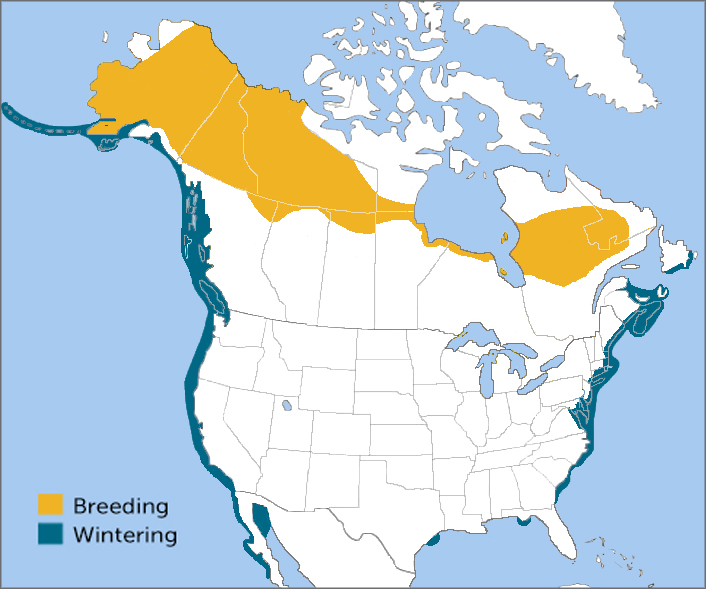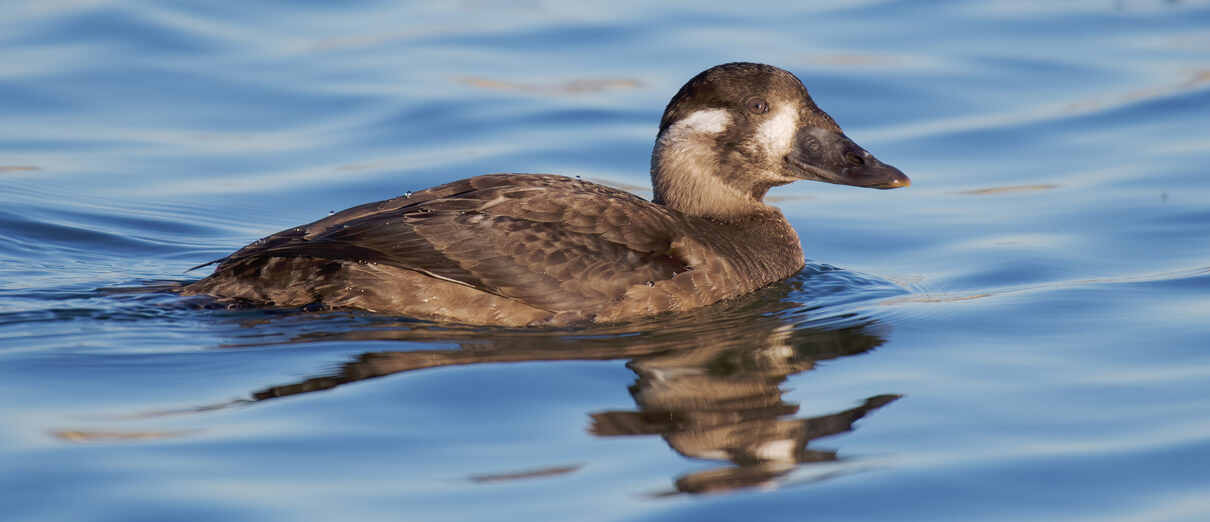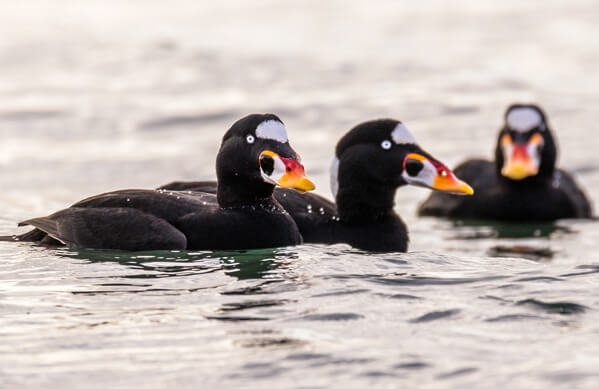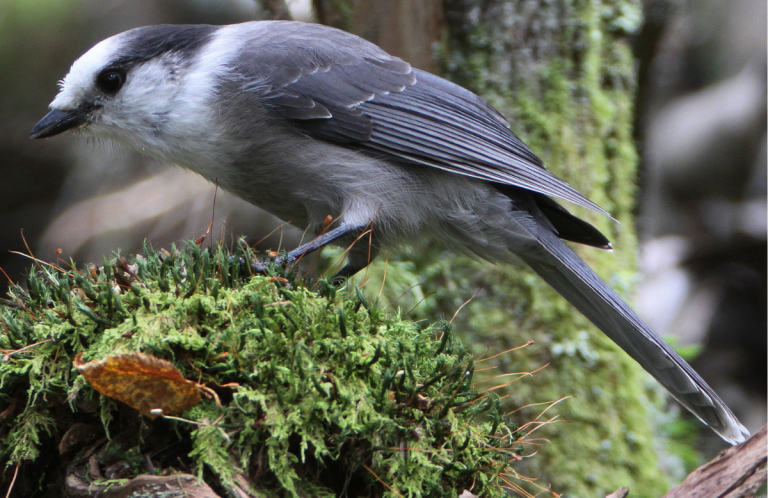
Surf Scoter range map by ABC
The male Surf Scoter is a striking sight: black, with white patches on its forehead and nape, an oddly shaped and multicolored bill, white eyes, and deep-orange legs and feet. The male's boldly patterned head is instantly recognizable even at a distance, and is the inspiration for the species' folk names of "skunkhead" and "skunk-headed coot." Females and juveniles are a more low-key brown, with white patches on the face.
This stocky duck is informally classified as a "sea" duck — essentially a diving duck like the Canvasback. The Surf Scoter and other sea ducks have special adaptations for an oceanic lifestyle.
Oceanic Adaptations
Like other ocean-dwelling birds such as the Laysan Albatross and Pink-footed Shearwater, the Surf Scoter has special glands to help filter out salt from its prey and from sea water. These glands concentrate salt from the bird's blood, which is then excreted in drops from the nostrils. The Surf Scoter's salt glands expand during the winter, while these ducks are at sea, then shrink in the summer when the scoters move inland to boreal habitats around freshwater lakes and ponds.
The Surf Scoter's large, strong, and colorful bill is no mere ornament — it is an efficient tool that allows this duck to pry marine shellfish off rocks as it feeds underwater.
Molt Migrants
The Surf Scoter is the only scoter species that breeds solely in North America, nesting near freshwater in remote boreal-forest regions of Canada and Alaska. This sea duck winters off both North American coasts as far south as Baja California; the majority winter off the Pacific Coast. Small numbers also show up in winter in Western Europe.
Wintering scoters are often seen flying low over the ocean in single-file lines, often in large flocks that may include other scoter and waterfowl species.
Surf Scoter migration is highly variable in the fall, with adult male, adult female, and immature birds moving south at different times, following different routes. Like many waterfowl species from the Trumpeter Swan to the Wood Duck, the Surf Scoter is a “molt migrant,” moving to a separate sheltered spot after nesting (but before migrating) to molt and re-grow its flight feathers.
Although generally silent, courting male Surf Scoters make low popping noises, and both sexes give raspy, low-pitched calls. This species' wings make a distinct whistling sound during flight.
Listen here:
(Audio: Micah Riegner, XC202795. Accessible at www.xeno-canto.org/202795 )
Mussel Muncher
A wintering Surf Scoter feeds mainly on shellfish, particularly mussels and clams. Like the Common Loon and Red-breasted Merganser, it is an efficient diver, using its strong, set-back legs and short, stubby wings to "fly" through the water to depths of over 80 feet. It can often be seen diving in and through breaking waves close to shore.
Since Surf Scoters have no teeth, they must swallow their shelled prey whole. Fortunately, this duck has an extra-large and extra-strong gizzard, which easily crushes and digests the shells. During the nesting season, when Surf Scoters switch to feeding in fresh water, they add crustaceans, insects and their larvae, and plant material to their diets. Females and ducklings in particular consume many insects during the Arctic summer.
Flashy Courtship
Surf Scoter courtship begins on the wintering grounds. Males posture to show off their bold white head patches, simultaneously wooing females and threatening competing males. Bonded pairs then head north to their breeding grounds, often in large flocks. Young males may linger on the wintering grounds during their second year.

Surf Scoter female. Photo by Certhian Photography/Shutterstock
Once on the breeding grounds, the male defends a territory, while his mate builds her nest near a pond, lake, bog, or stream. The nest is a well-hidden, shallow depression on the ground, lined with moss, grasses, bark, and soft down feathers. The female scoter's subtle brown plumage comes into its own on the nesting ground, providing outstanding camouflage as the hen incubates her clutch of five to eight eggs. The ducklings hatch all at once, and soon follow their mother to the nearest water.
Threats: Running the Gamut
Like other Arctic-nesting bird species ranging from the King Eider to the Peregrine Falcon, the Surf Scoter is vulnerable to habitat loss, particularly from climate change. This sea duck also is vulnerable to oil spills and other pollution, as well as entanglement in fishing nets and unregulated sport hunting. The expansion of offshore wind facilities could impact important Surf Scoter migratory routes and wintering areas.
ABC's Bird-Smart Wind Energy Program is working to protect migratory birds such as the Surf Scoter from the threat of poorly sited and -managed wind turbines. ABC also offers a comprehensive guide, "Seabird Bycatch Solutions," and provides an interactive web-based tool to help fisheries managers assess threats and avoid accidentally catching ocean-going birds.
Donate to support ABC's conservation mission!



















































